| |
Travel
back in time 650,000 years and you’ll
meet Southwold’s first visitors.
Naked, hairy and keen on raw meat,
they arrived on foot from mainland
Europe as the Ice Age retreated. Evidence
of their Southwold stay includes some
of Britain’s earliest fossils
and tools found in cliffs at Easton
Bavents and further north at Pakefield. |
|
| |
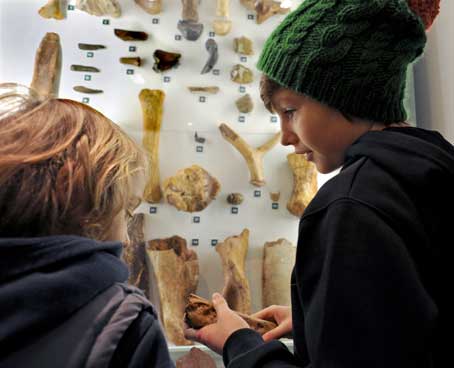
|
Survival
in prehistoric Southwold wasn’t easy
for these ape-like human ancestors. Wild
animals including lions, hyenas and bears
hunted their prey on land while hippos and
rhinos roamed the rivers. Early humans would
have seen animals now long-extinct: giant
deer, mammoth and the spectacular sabre-toothed
cat.
|
|
|
|
Visitors
eventually became settlers. East Anglia’s
rich supply of flints meant people could
hunt and farm with tools long before metal-working
developed. Later, the Romans and Vikings
passed through, leaving a few coins and
boat remnants in evidence. But by the
time of the Domesday Book, in 1086 AD,
Southwold and nearby Reydon and Easton
Bavents were all small but permanent settlements.
|
|
|
|
|
North
of Southwold, Easton Bavents is
an important area of pre-history.
It is the site of an ancient settlement
and its liability to erosion means
that buried remains are constantly
exposed.
Learn more about this archaeologically
rich landscape by clicking the picture.
|
|
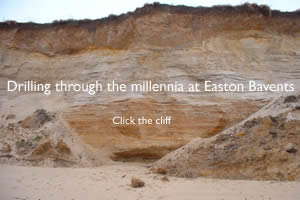 |
|
|
|
|
|
|
| |
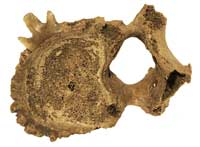 |
| |
A
GRUESOME FIND...
A
Palaeolithic primate
vertebra with the (probably
fatal) flint arrowhead
still embedded in it! - top left See it in the Museum's
collection.
Click
the picture to examine
it in more detail.
|
|
|
|
|
|
|
|
|
|
|
|
|
|
|
AMBER,
CARNELIAN AND AGATE
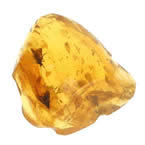
A
piece of amber containing flies
which are between 30 and 90 million
years old!
Click
for a closer look
|
|
|
|
Mammoth
memories 1.
Tusk
of a Mammoth or Great Elephant trawled
up from Southwold Deep.
Click
to enlarge
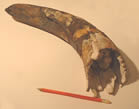
|
|
Mammoth
memories 2.

Cast
of lower molar of an elephant-like
beast: Mastodon (Anancus) ARVERNENSIS
found at Easton Bavents in 1931.
Click
to enlarge
|
|
|
| |
The Bronze Age in and around Southwold!
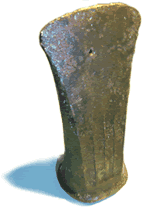
Bronze age axe head

|
|
|
Bronze age image of a deer carved on bone found in Easton Bavents.
Click the image for a better look.
For more about the Bronze Age settlers, click here
***
If you would like to explore Suffolk's heritage in greater depth, visit
Suffolk Heritage Explorer
32,500 entries ranging from 700,000-year-old flint tools to Cold War military sites.
|
|